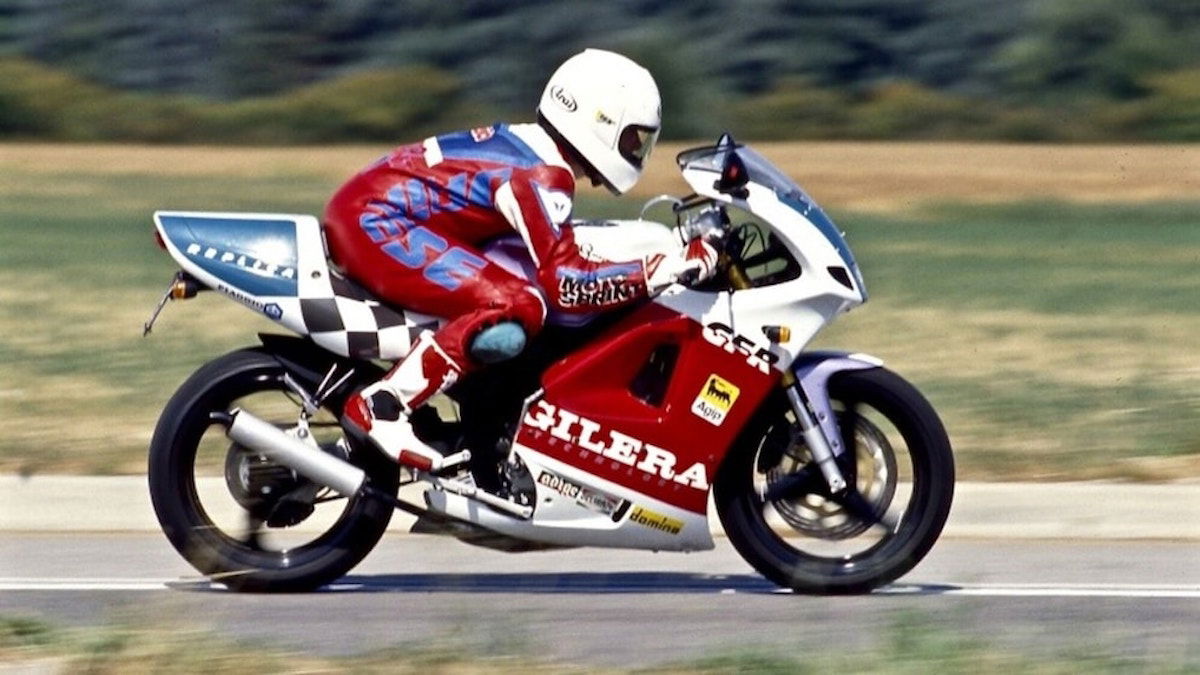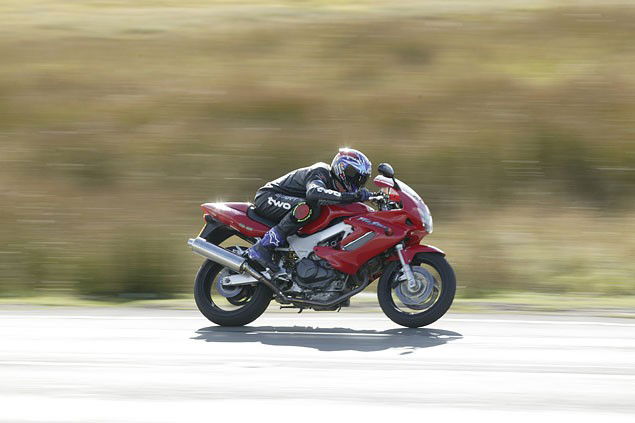Top 10 used 400cc sports bikes
Pocket rockets for pocket money

RULES and regulations are often castigated for ruining our fun. The widely-held view that politicians introducing arbitrary limits, particularly in areas like motorcycling where they’re generally clueless, is something that we’re all understandably wary of.
But just once in a while, by accident rather than design, a silly rule leads to a wonderful loophole. That’s what happened in the late 1980s and early 1990s when 400cc bikes briefly became the pinnacle of technological excellence.
It all came down to Japanese attempts to stop people riding large, fast bikes. Anything over 400cc was classed as a heavy motorcycle, with additional restrictions and costs when it came to licencing, tax, insurance and mechanical inspections (shaken). The restrictions virtually killed the Japanese market for larger bikes, and forced the world’s cleverest motorcycle engineers to work out how to fill the demand for fast bikes without resorting to capacity.
Wonderfully, the result was a huge crop of incredibly sophisticated sub-400cc miniature sports bikes (and also a class of jewel-like 250cc four-strokes, created to slip into an even cheaper tax and licencing class).
Better still, hundreds or even thousands of them later appeared on the ‘grey’ market in the UK. Often exported to avoid the ever-more-expensive shaken (MoT) test in Japan, these became the default entry-level sports bikes for a generation that had just missed out on the heyday of the two-stroke sportster.
Now, a quarter of a century or more from their release, they’re starting to reach classic status, with prices for good ones on the increase. Grab them while you can.
Click 'Next' for a run-down of the top 10 best, and sometimes rarest, examples of the breed.
10: Ducati 400SS
The Japanese laws might have sparked the 400cc market but foreign makers also had to comply, and the 400SS was Ducati’s stab at the market. Sold alongside a similarly-engined Monster 400, the 1991-1998 400SS was a sleeved-down version of the 600SS. It had all the size and style of a larger Ducati, but a smaller engine. And that was the problem. With only two cylinders, it wheezed its way to 42bhp, or around 2/3rds of what a decent 4-cylinder, 4-stroke Japanese rival would manage. These days it’s an interesting oddball, but one that’s hard to justify – why not just buy the 600SS? Actually, the 47bhp-limited A2 licence bracket, while not conceived back then, might make the 400SS an intriguing stepping-stone bike today.
9: Bimota DB2 400 Junior
So a 400SS gives you Ducati style with a 400cc motor. But how about Bimota style? Yes, that was an option too back in the early 90s. The firm played its usual mix-and-match game, and since it already had the DB2 developed to suit Ducati’s 900cc V-twin engine, it made sense to bolt the baby 400cc Ducati motor into the same chassis and create a Japan-friendly model. Around 101 of the bikes were made, a small number but one that actually represents something of a success in Bimota terms… However, if you’re in the market for a Bimota now you’ll have more fun with the full-fat 900cc DB2.
8: Bimota Tesi 1D 400J
Yes, there was more than one 400cc Bimota option! Only some 51 of these Tesi 1D 400Js were ever made, though, so good luck finding one. Powered by the same Ducati engine as the 400SS and DB2 Junior, bolted to the legendary hub-steered Tesi 1D chassis, it’s a real curio. As such, if you find one it’s probably an appreciating asset, and it might give you access to Tesi weirdness at a lower cost than the superbike-sized, Ducati 851-powered version. But it also suffers from the weak 400cc Ducati engine.
7: Honda NS400R
Ok, so most of the bikes on this list are four-strokes, but Honda was alone in creating a two-stroke (already getting out of its comfort zone) that fitted the 400cc size category. Less powerful and still cheaper than its 500cc rivals, the RG500 and RD/RZ500, it had a GP-inspired three-cylinder engine and 72bhp. Triple exhaust pipes and a cool, faired-in side-stand – not to mention works-rep Rothmans or HRC paint schemes – make it a verifiable slice of retro cool today. The downside is a scarcity of parts and the need to tune the engine to release anything like its full potential.
6: Kawasaki ZXR400/ZXR400SP
Kawasaki jumped into the 400cc sports bike class with both feet. Starting with the GPZ400R in 1985 (and GPz400F even before that), it went on to make the ZX-4 in 1988 and by 1989 had both the ZXR400 and the ZZR400 in its arsenal. Better still, though, was the single-seat, flat-slide-carbed, better-suspended ZXR400SP. The original H (1989 H1 and 1990 H2) model was replaced with the smoother-styled L1 in 1991, which went nearly unchanged to the final L9 version in 1999.
5: Honda CBR400RR
Of course Honda was in on the 400cc four-stroke game. The CBR400 started gaining extra Rs in 1986 with the CBR400R Aero (looking like the original CBR600 jellymould), a replacement for the half-faired, endurance-race-style CBR400F. But in 1988 it gained the second R and effectively previewed the styling that the Fireblade would adopt four years later. The bike, the Tri-Arm, was a quantum leap forward. But better was to come with the Gull-Arm in 1990. Now there’s a new CBR400R in Japan, but it’s a weak-kneed derivative of the tame CBR500R twin we get here, and not a patch on its illustrious predecessors.
4: Yamaha FZR400RR-SP
When it comes to sheer alphabet overkill, the FZR400RR-SP leaves little doubt that it’s something special. In a world where ‘R’ means sporty, ‘RR’ means sportier and ‘SP’ means sportier-still, it’s about as hardcore as you can get. As with the ZXR400 we mentioned before, the SP model lost its passenger seat and gained some user-unfriendly flat-slide carbs. Think of it as a miniature OW-01 and you won’t be far from the mark. Lovely.
3: Suzuki GSX-R400R SP (1989)
Suzuki might have kicked off the modern superbike genre with the 1985 GSX-R750, but that bike was really just an upscaled version of the GSX-R400 that appeared a year earlier in 1984. That original slab-side is pretty cool, but by 1986 it was upgraded to a beam frame (long before the GSX-R750 would get one) and in 1988 it got revamped again to get an even beefier one, as well as new looks. At the same time, a single-seat SP version was added to the range, but just a year later, in 1989, the GSX-R400R was revealed, again with a single-seat GSX-R400R SP sitting alongside it. Weirdly, in 1990 (yes, the bike was heavily revamped every single year) it was given a GSX-R750-style cradle frame – a backward step that it would stick with until the model was killed in 1995.
2: Honda NC30 (NC21, NC24, NC35)
These days there’s endless discussion over whether Honda should, or will, launch a V4-powered race rep to sit alongside the Fireblade in its road bike range. But back in the 1980s the firm had no compunction at all over an in-house rivalry, with VFR400R V4s to compete with its own CBR400RR straight-four models. With a 180-degree crank and gear-driven camshafts, the VFR400Rs were always seriously high-spec, race-rep bikes. These days the earlier models – the 1986 NC21 and the 1987 NC24 – are often disregarded (perhaps unfairly, particularly as the latter was the first single-sided swingarm production bike). No, it’s the 1988-on NC30 that gets most of the attention. A miniature RC30 lookalike, it had all the technology of its illustrious bigger brother, and stripped of its badges would fool most onlookers too. The updated NC35 gained RC45-inspired styling and upside-down forks from 1994-1995.
1: Bimota YB7
Yes, it’s the third Bimota on our list, and by far the best one. That’s largely because instead of the strangled Ducati 400 engine it uses Yamaha’s FZR400 motor making a healthy 65bhp. Despite that extra grunt, the simply enormous aluminium beam frame is the epitome of overkill. combined with the alloy swingarm, Ohlins shock and Marzocchi forks it provided a chassis that could cope with twice the power. On top of all this sits bodywork that’s among Bimota’s best, with brutal 1980s proportions and the twin, round headlights that were the definition of a serious sportsbike in that era. With over 300 made, it was a big success in Bimota terms, too, which means finding one might not be as hard as with some of the firm’s other creations. Prices today aren’t even that crazy – a 2285-mile one went for just £4901 on eBay last month. Try getting an NC30 with that mileage for that money…

